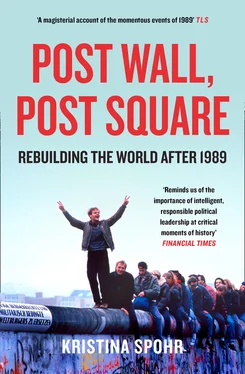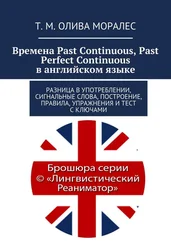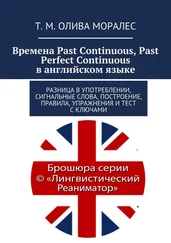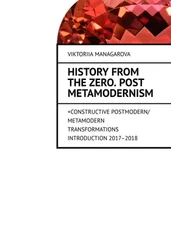It was a sign of the times that this deal was struck before Budapest officially informed the Kremlin of its border decision. An intense few days of ‘travel diplomacy’ ensued. But once Horn spoke to Shevardnadze, it was clear that the Soviets were willing to grant the Hungarians a free hand in their actions.[139] And Kohl’s telephone conversation with Gorbachev himself also produced a green light, with the Soviet leader’s laconic, even banal, observation ‘the Hungarians are good people’.[140]
The Hungarians were, however, much less successful in sorting out arrangements with the GDR. In East Berlin on 31 August Horn told Foreign Minister Oskar Fischer he was willing to send the East Germans home if the GDR pledged it would grant the escapees immunity from prosecution and guaranteed their right to emigrate legally. Yet Fischer offered only immunity and kept insisting that upon their return these East Germans would have to ‘pursue their individual exit visas’ with legal assistance but with no promise that permanent exit permits would be automatically granted. He also demanded that Hungary close its borders for East Germans, which Horn rejected. East Berlin also tried to convene a meeting of Warsaw Pact foreign ministers to put pressure on Budapest – but Soviet, Polish and Hungarian officials all objected, arguing that the Pact was not an appropriate forum to deal with the matter. So by 5 September the SED Politburo was reduced to old-fashioned communist bluster, accusing Hungary of ‘doing the bidding of Bonn’ and ‘betraying socialism’.[141]
On 10 September Horn made his public announcement that the Hungarian government would allow East Germans to cross freely into Austria, from where they could continue to the Federal Republic. Hungary, Horn declared, did not want to become ‘a country of refugee camps’ and was determined to ‘resolve the situation on humanitarian gounds’. His deputy Ferenc Somogyi told the international press – carefully choosing his words, delivered in English. ‘We want to open up and diversify relations with Western Europe and the West in general.’ In this vein, Somogyi said, Hungary had accepted a general European attitude and thereby moved ‘closer to the West’, placing ‘absolute primacy on universal humanitarian values’. What’s more, he added approvingly, ‘similar considerations’ now also characterised Soviet policy.[142]
The drama then unfolded on TV screens across the world. From the early hours of 11 September a mass exodus ensued. The East Germans, many of them young people in their twenties and thirties (mainly craftsmen such as bricklayers and masons, plumbers and electricians), poured across the Austrian border in cars, buses and trains. Austrian Interior Ministry officials said that by late that evening 8,100 East Germans had entered Austria en route to West Germany and that the flow was increasing steadily. And with this stream of people, Craig Whitney of the New York Times remarked that the ‘ German question’, that ‘dream, or fear, of German reunification, also came alive with them’. He quoted a senior US diplomat: ‘It’s still not going to happen any time soon, but there’s beginning to be serious thought about it. It’s not just a pious platitude any more.’[143]
On 12 September Kohl sent Németh a telegram thanking him for this ‘generous act of humanity’. The same day, the chancellor exploited the euphoric mood in West Germany to full effect at his party convention in Bremen where some Christian Democrats were trying to overthrow him. He declared that it could never be the policy of responsible West German officials to urge East Germans to flee. But ‘it is a matter of course that everyone who comes to us from East Germany will be greeted by us as a German among Germans’. Appealing to national sentiments and presenting himself as a true patriot chancellor, Kohl managed to fend off the leadership challenge and secure reconfirmation as party leader. Not for the first or last time in these turbulent years, international politics reverberated in domestic affairs.[144]
By the end of September, between 30,000 and 40,000 people – far more than even informed circles had ever anticipated – had gone West via this route.[145] The Honecker regime was furious but East Germany was now diplomatically isolated in the Warsaw Pact. Crucially, Moscow hardly protested at all. On the contrary, Gennady Gerasimov, the Foreign Ministry spokesman, merely said that the border opening was ‘a very unusual and unexpected step’ but that it did not affect the USSR directly. That the Soviet Union went along with the Hungarian decision, thereby distancing the Kremlin even further from East Berlin, was a serious blow to the Honecker regime’s morale. There were even question marks over Gorbachev’s much-anticipated attendance at the upcoming fortieth-anniversary celebrations of the GDR’s foundation on 7 October. It was no secret that Gorbachev deeply disliked the ‘scumbag’ ( mudak ) Honecker, as he told Chernyaev. And the Soviet leader certainly did not want to be seen as supporting Honecker’s hard-line position against more reform-minded East German communists. Indeed, after his triumphant trip to Bonn, he had explained to Honecker in no uncertain terms that the USSR was changing. ‘This is the destiny of the Soviet Union,’ he declared, ‘but not only its destiny; it is also our common destiny.’ Nor was he keen to jeopardise his budding political friendship with Kohl: like Németh, Gorbachev’s policy towards the GDR was now being framed against hopes of West German financial injections, which the chancellor had promised during the Soviet leader’s June visit in Bonn.[146]
Unable to mobilise the Warsaw Pact in its support, the East German government used its own powers to the utmost. During September it imposed severe restrictions on GDR citizens travelling to Hungary. Although many still managed to get through, this policy simply had the effect of diverting the human traffic towards the West German embassies in Warsaw and Prague. By 27 September there were 500 East Germans seeking refuge at the Warsaw embassy and 1,300 in the Prague mission.[147]

Camp out for freedom – East Germans besiege the FRG Embassy in Prague
Prague was particularly hard hit because Czechoslovakia was in any case the transit route for East Germans hoping to head West via Hungary. And the moment East Berlin denied permission to travel to Hungary, GDR emigrants simply stayed in Czechoslovakia rather than returning home. These were people who had so far neither applied for a permanent exit visa to West Germany nor did they have adequate papers to enter Hungary. For fear of being picked up by the Czechoslovak authorities and then deported to the GDR, they hoped to achieve their goal of getting to the West by sitting it out in the grounds of the West German embassy – an eighteenth-century palace in the centre of Prague, whose beautiful park became a squalid and unsanitary refugee camp.
By the end of the month, more than 3,000 people lived in and around the main embassy building, 800 of whom were children. They had four toilets between them. The women and children bedded down at night on foam-rubber pads, while the men slept in shifts in tents spread out incongruously under black baroque statues of goddesses in the once-elegant gardens. Food was at best simple: coffee, tea, bread and jam for breakfast, and a thick soup that the Germans call ‘one-pot’ ( Eintopf ) for the other meals – served from field kitchens that steamed and smoked behind the wrought-iron garden gates. ‘There’s an occasional orange for every two or three children, for vitamins,’ a young mother said bleakly.[148]
Читать дальше













